Stock Market Internals are Weakening by the Day
As detailed in my recent piece covering the outlook for the S&P 500, I remain fairly cautious toward equities over the coming months.
Since laying out my thesis on how we may be nearing a market top, many of the key indicators and metrics to which I came to such a conclusion have only worsened. Some markedly so.
Indeed, at the centre of the indicators and measures of market “health” to which I speak are the various measure of market internals, which as we shall see, have now become wholly unsupportive of this stock market rally.
Beginning with my preferred measures of short-term market breadth, as we can see below, this latest high in the S&P 500 has been accompanied by lower highs in the percentage of stocks trading above their 20-day moving averages, the eight-day rate-of-change in the S&P 500’s advance/decline line as well as the McCellan Oscillator.

Not only are we seeing bearish divergences in these short-term measures of market breadth, but we are seeing similar divergences in some of the longer-term measures I monitor, as shown below.
When actionable indicators are triggered across multiple time frames (be they bullish or bearish), it’s worth taking note. As it stands, stock market breadth across all time frames is woeful.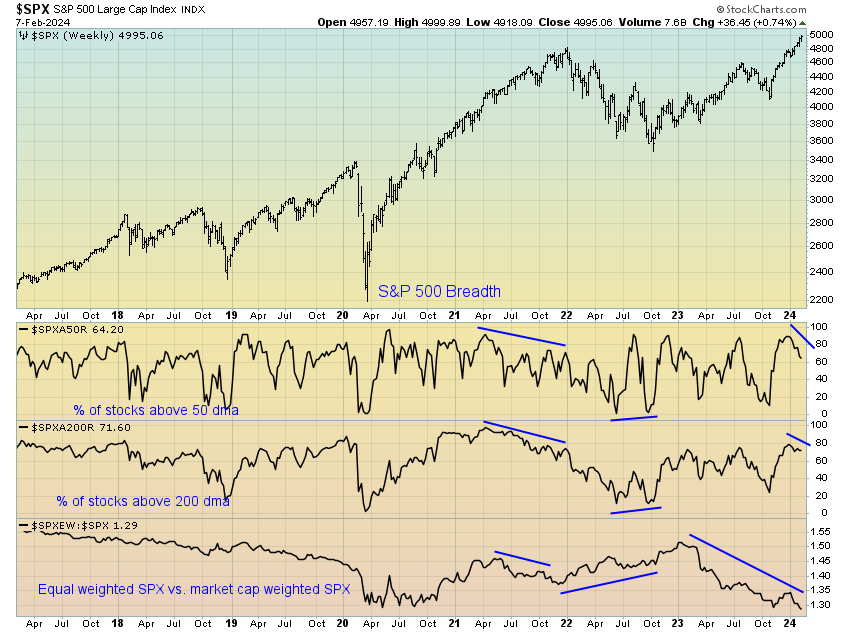
What we have also seen these past weeks is a number of long-term warning signals triggering among the Nasdaq and NYSE’s constituents in the form of multiple Hindenburg Omen and Titanic Syndrome sell signals. These eccentrically named indicators are effectively just warning signals that use various measures of market breadth as inputs, and when we see a number of such measures trigger in a short period of time (as we have seen on the Nasdaq of late), it is often associated with price action being close to some kind of market top.
Indeed, per the work of SentimenTrader, “during the past three weeks, these two indicators have triggered a combined eight signals. That's the most since December 2021. We can see from the chart below that when eight or more signals were triggered, the Nasdaq Composite's annualised return was a horrid -29.3%.”
Source: SentimenTrader
Importantly, poor market breadth is not the only measure of market internals which investors should be cautious of at present. Both my Pro-Cyclical Index and Risk Appetites Index have also diverged notably from the S&P 500 in recent weeks. What this means is the recent highs in the broad index are not being confirmed by the outperformance of pro-cyclical and economically sensitive stocks, nor is it being confirmed via the outperformance of high-beta and risk-on assets that would generally accompany a sustainable market rally.
This is true both on a daily and weekly basis. The previous times my Risk-Appetites Index diverged from the S&P 500 to such a degree was in late 2018, early 2020 and late 2021. Each instance preceded some type of market correction.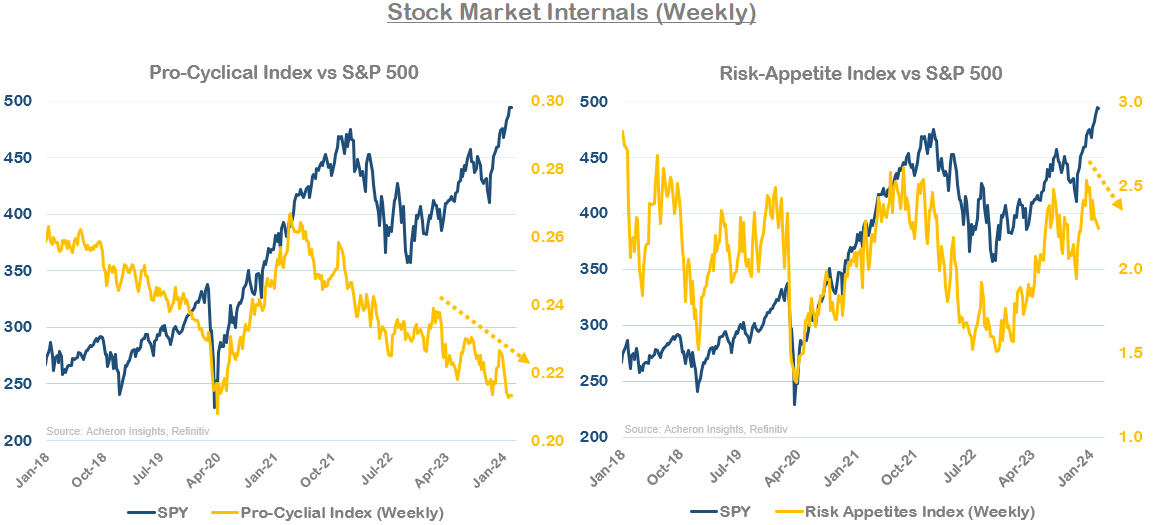
However, it must be said that deteriorating market internals are not a guarantee of any kind of market correction, or even pull-back for that matter. Market internals can self-correct via cyclical outperformance and broad underlying participation, something we have actually seen to a minor degree over the past couple of days.
But, when we view the poor market internals in the context of stock market positioning, it does make it more difficult to argue for a continuation of this rally. As we can see below, asset managers and systematic volatility funds are currently long this market to an extreme degree (one that generally portends poor subsequent returns), while survey positioning measures such as the AAII Bull-Bear spread are also close to levels representative of extreme euphoria. Of course, the exception here is hedge funds, who are one source of capital who have scope to add additional long equity exposure.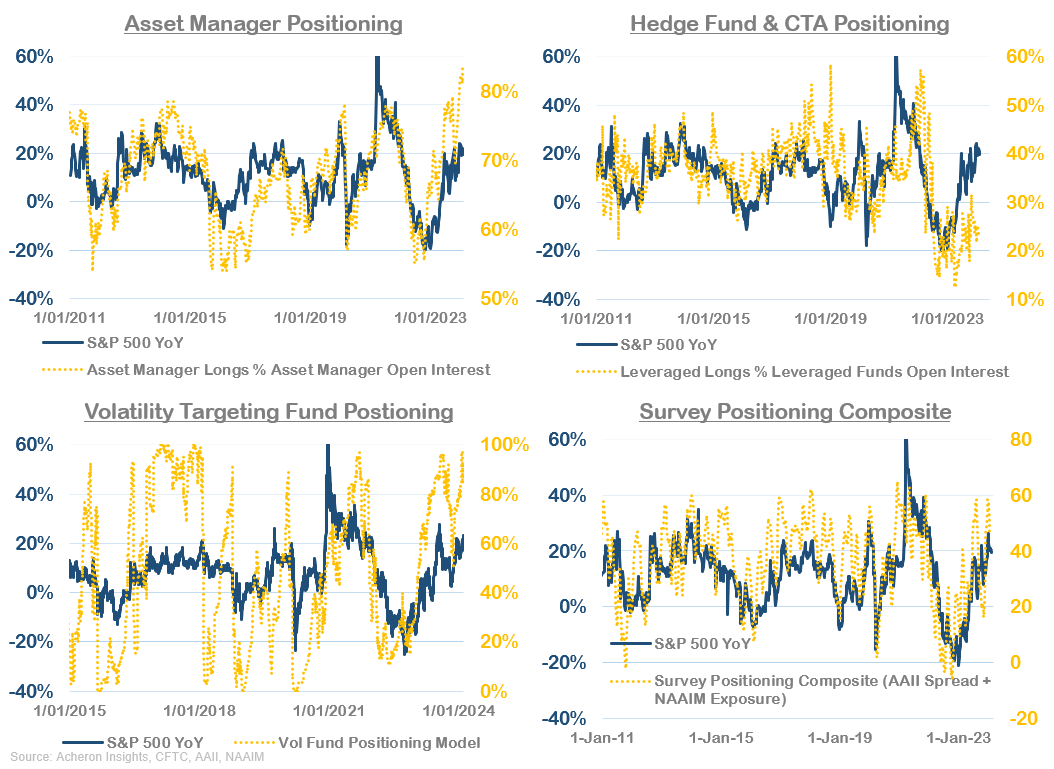
But in aggregate, positioning is reaching a level that is generally associated with some kind of market top. Case and point are trend following CTA managers, who according to Goldman Sachs, are long the market to such a degree they have little upside buying to do at current levels, but a whole lot of selling should stocks retreat.
Source: Goldman Sachs
One important factor that has been a primary driver of the recent strength in stocks has been the rise in net liquidity (blue line below, proxied via commercial bank reserve balances). Despite the Fed attempting to reduce its balance sheet and shrink the level of reserves in the system via QT, this has been more than offset for much of 2023 as a result of the Treasury issuing an increased proportion of their debt in the form of shorter-dated Treasury Bills, as opposed to longer-dated Treasury Coupons. This has allowed money market funds (who are flush with cash) to move their capital out of the Fed’s Reverse Repo Facility (RRP, which is effectively money that is outside of the financial system) and buy the newly issued Treasury Bills. And, so long as the Treasury has been drawing down its account at the Fed funded from its debt issuance, which it has been doing, these monies of money market funds effectively find their way out of the RRP and onto commercial bank balances sheets, thus increasing the level of reserves in the system, and increasing net liquidity.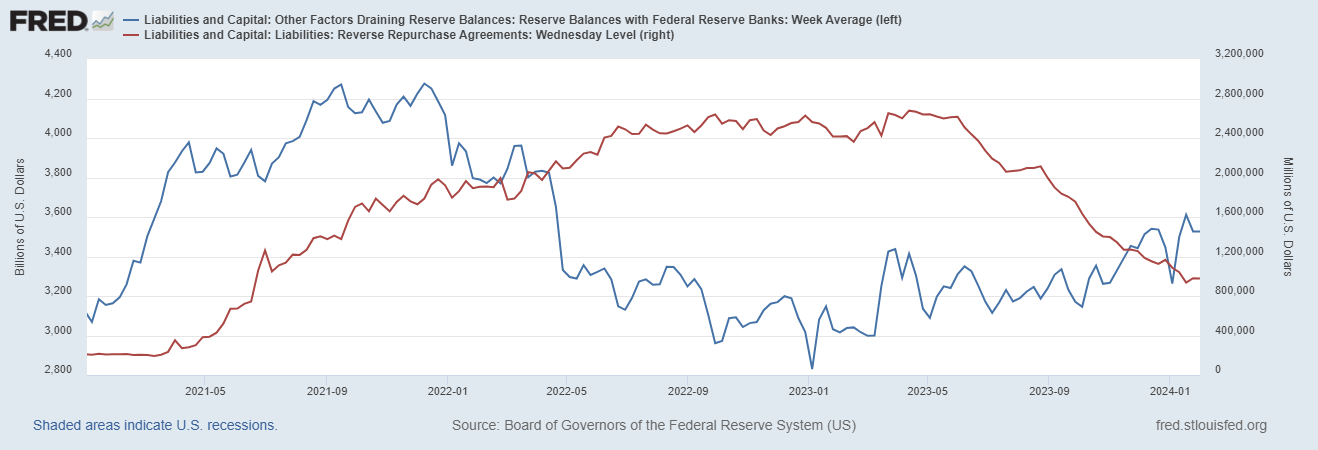
This process has been supportive of risk assets for much of 2023 as commercial bank reserves have been rising throughout the past year. But, this is also a process that cannot last forever. Indeed, not only has the RRP balance (red line above) fallen from $2.5t to
As it stands, based on the latest Quarterly Refunding Announcement from the Treasury, the short-term issuance outlook is not necessarily bearish as the Treasury only marginally reduced its planned proportion of Bill issuance for the coming quarter. But, so long as the Fed is undertaking QT, at some point this year this dynamic will matter given the depleting balance of the RRP.
Moving on to seasonality, this is another important dynamic I have discussed much in recent in times given the increasing influence of delta heading flows surrounding the monthly options expiration on the back of record structured product issuance. The next window of vulnerability is set to open following February’s options expiration on the 16th of this month. As we can see below, this is generally a period that is less than favorable for the S&P 500, particularly given that it also coincides with below-average corporate buybacks.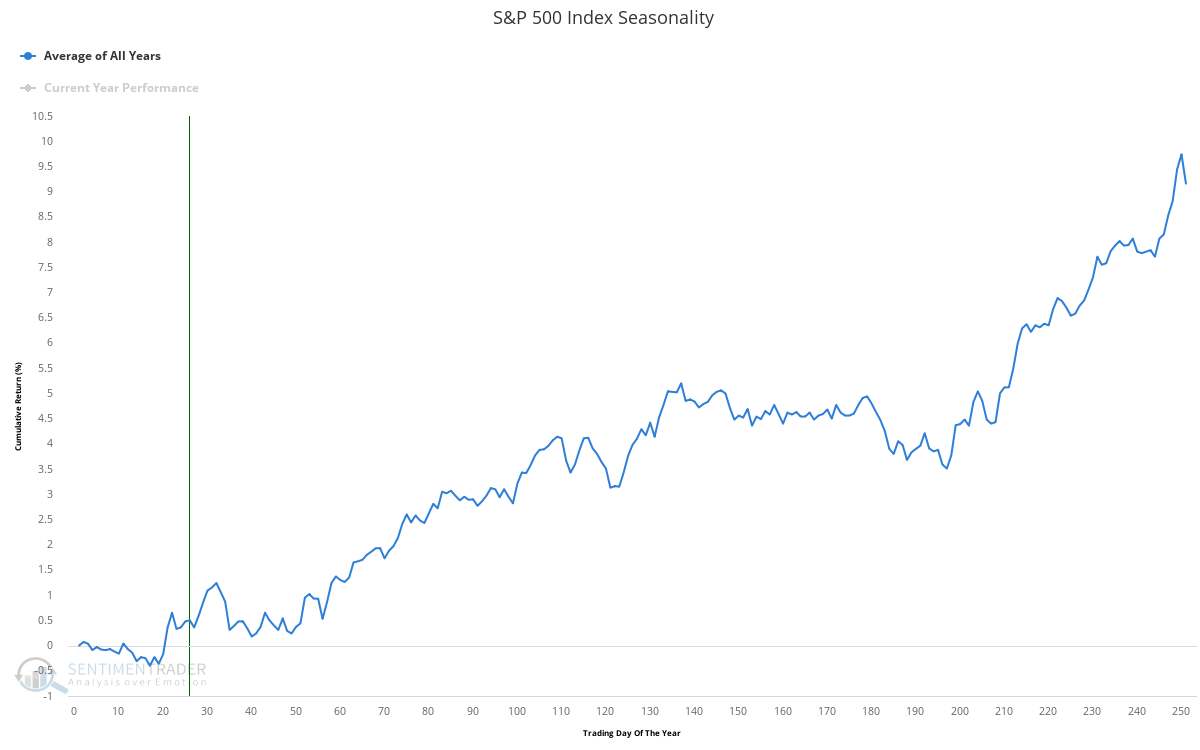
From a technical perspective, things are also looking a little precarious. The S&P 500 looks to be forming an ascending wedge pattern, one that is generally considered a reversal technical pattern, and is doing so amidst a divergence in the RSI as well as a recently triggered 9-13-9 DeMark sequential sell signal.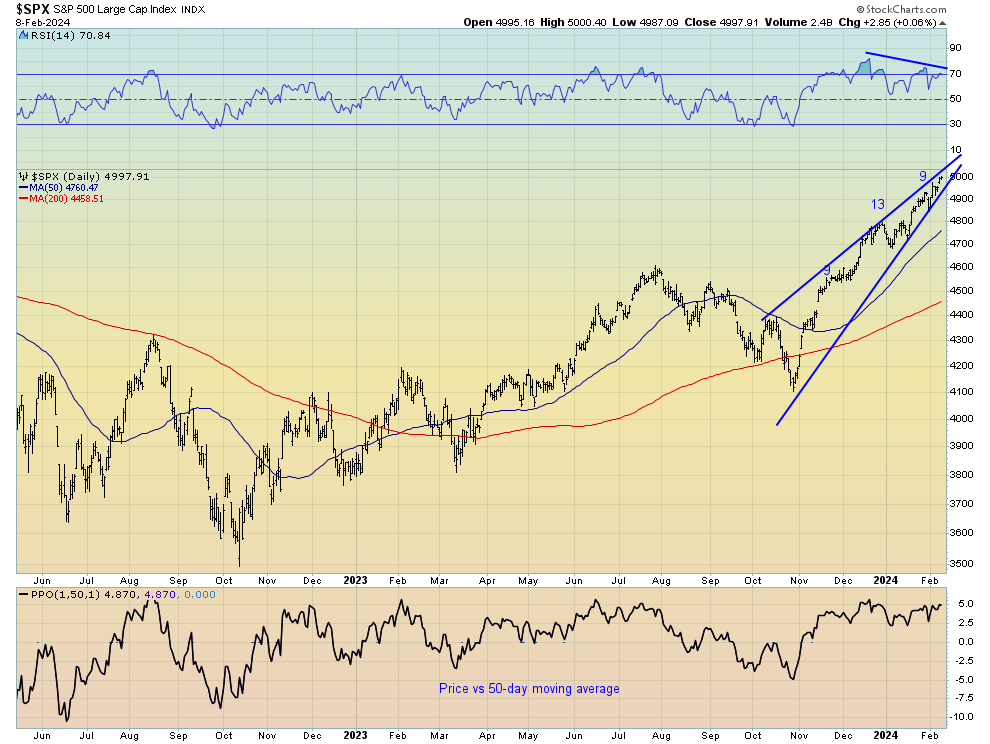
Another area of the market that looks like it could continue to exert pressure on stocks are yields. As we can see below, the 10-year bond yield remains well supported above the 3.8% area, and remains above its 50 and 200-day moving average. Unless this level is broken to the downside (something which I remain skeptical will occur for the time being), pressure will mount on the current rally in stocks.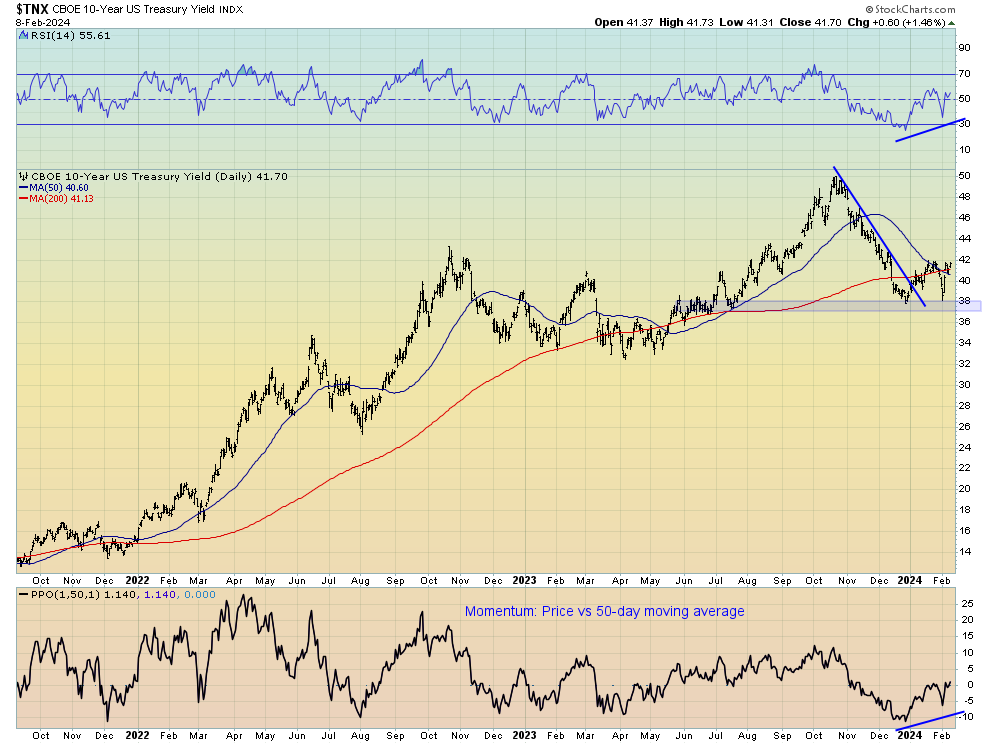
Indeed, if we compare the inverse relationship between yields and the yield-sensitive Nasdaq, the past couple of months has seen the Nasdaq rally in the face of rising yields in a similar manner to what occurred during the latter stages rally throughout the first half of 2023.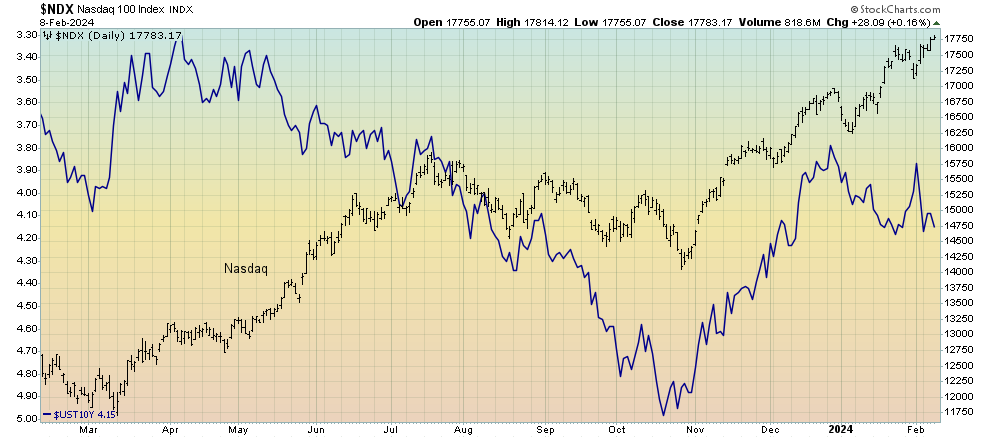
One factor that could exert further upside pressure on yields themselves is a bounce in headline inflation. While I expect core CPI to trend lower throughout much of 2024, as I detailed here, there remains a decent chance we are close to a bottom in headline CPI, with goods inflation looking like it could reaccelerate over the coming quarter or two. This is a dynamic my inflation-leading indicator has been signaling for a few months now.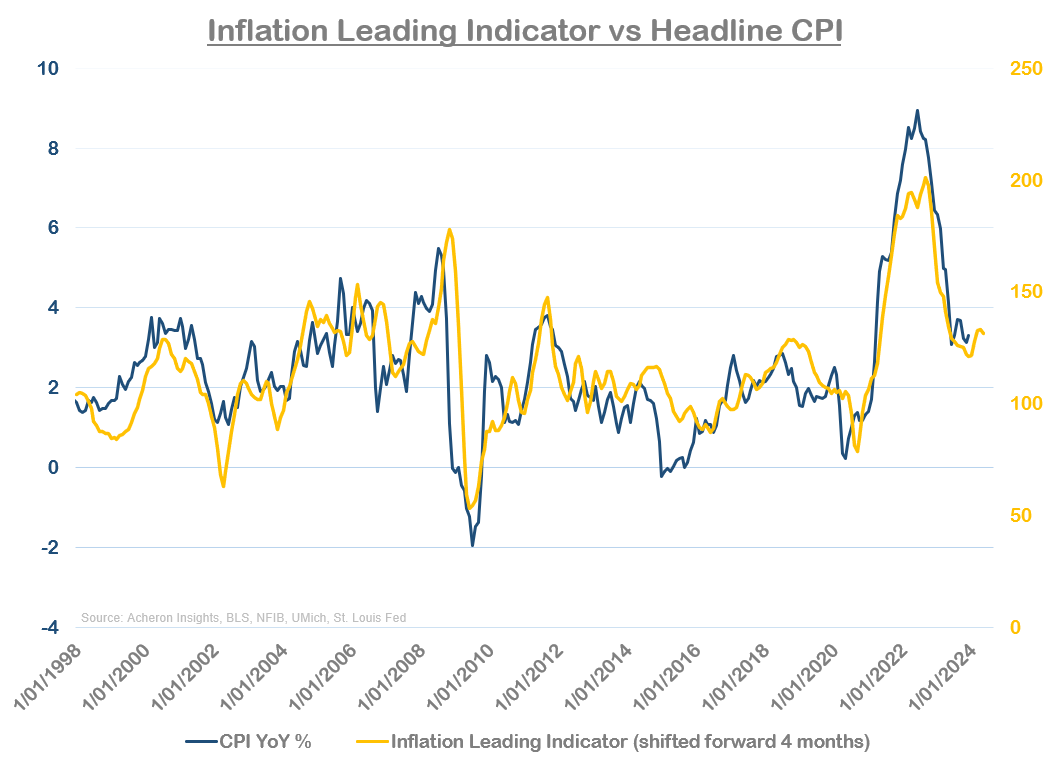
Given that the market is 1) priced to perfection from a growth and inflation standpoint, and 2) pricing in a much easier Fed throughout 2024, things could get ugly if the soft landing that consensus now expects doesn’t eventuate, or even if the downtrend in inflation is near its crescendo.
Whether we do see a pull-back of some kind in the coming month or two or whether we see sideways to up price action remains to be seen. But, given how extreme positioning has become and the poor state of market internals, the present does not appear to be a particularly good time to be buying the S&P 500. At the very least we should expect to see a rotation out of the dominant stocks within the Nasdaq and S&P 500 and into some of the more cyclically sensitive names.
